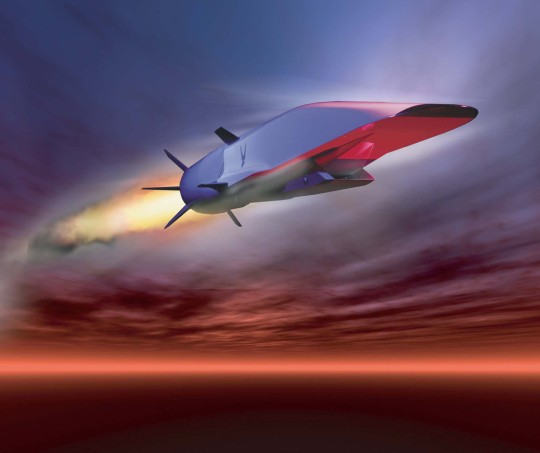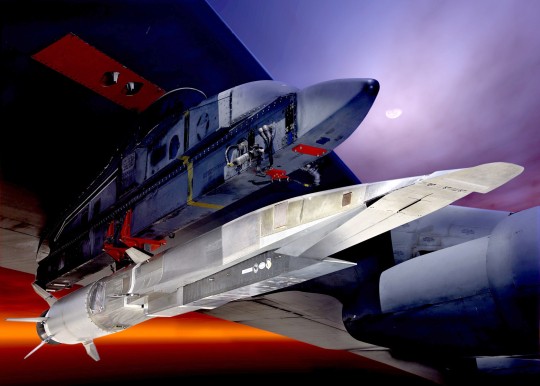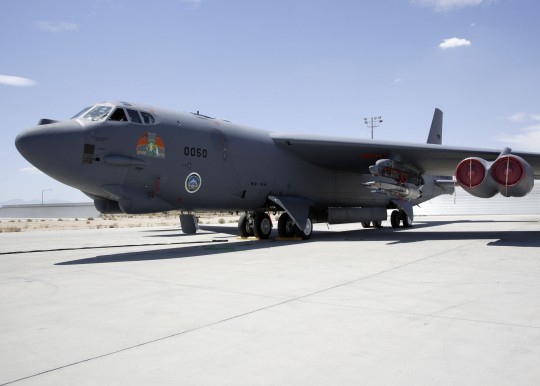
Boeing’s X-51A Waverider has traced an arc of fire above the Pacific Ocean off southern California overnight in a hypersonic debut notable more for its duration than speed.
The first flight of the scramjet research vehicle, launched from a modified B-52 bomber, lasted 200 seconds and reached Mach 5, by far the longest flight at such a velocity for an air breathing engine yet achieved.
The flight ended at that point, 100 seconds short of its optimum mission, for reasons as yet unknown, although the terabytes of data sent by its instruments are expected to reveal the cause, and provide the most detailed information yet gathered about the hypersonic flight regime which begins at Mach 5 and above.
The Waverider then crashed into the sea as planned.

Hypersonic velocities generate so much atmospheric friction that normal engines would vaporise. The scramjet/ramjet technologies use vehicle velocity rather than conventional engines to compress the air into a combustion chamber.
As described in this earlier report about leading edge research being done into hypersonic combustion at the University of Queensland, the technology is often mislabelled as being about cutting passenger trip times to less than two hours to London when it is really about military or commercial space lift applications.
On July 30, 2002, a Hyshot test vehicle that the UQ hypersonics team attached to a rocket launch at Woomera sustained hypersonic combustion at a speed of about Mach 6.8 for five seconds, a world first.
On November 16, 2004, the air launched X-43A set the current hypersonic flight speed record of Mach 9.6, sustaining hypersonic combustion for 10 seconds after being boosted to into that speed zone with a rocket, similarly to the Hyshot series and this first powered flight of an X-51A.
A Boeing statement said:
The X-51A was carried aloft under the left wing of an Air Force Flight Test Center B-52H Stratofortress that took off from Edwards Air Force Base. It was released while flying at approximately 50,000 feet over the Point Mugu Naval Air Warfare Center Sea Range. Four seconds later, a solid rocket booster from a U.S. Army tactical missile accelerated the X-51A to about Mach 4.5 before it and a connecting interstage were jettisoned. The X-51A’s engine ignited on a mix of ethylene and JP-7 jet fuel. After a short period, the X-51A ran exclusively on JP-7 jet fuel. The flight reached an altitude of about 70,000 feet and an approximate speed of Mach 5.
The vehicle’s fuel-cooled engine design serves both to heat the JP-7 to an optimum combustion temperature and to help the engine itself endure extremely high operating temperatures during the long burn.
The X-51A program is a collaborative effort of the Air Force Research Laboratory and the Defense Advanced Research Projects Agency, with industry partners Boeing and Pratt & Whitney Rocketdyne.
Joe Vogel, Boeing director of Hypersonics and X-51A program manager said, “This is a new world record and sets the foundation for several hypersonic applications, including access to space, reconnaissance, strike, global reach and commercial transportation.”








Crikey is committed to hosting lively discussions. Help us keep the conversation useful, interesting and welcoming. We aim to publish comments quickly in the interest of promoting robust conversation, but we’re a small team and we deploy filters to protect against legal risk. Occasionally your comment may be held up while we review, but we’re working as fast as we can to keep the conversation rolling.
The Crikey comment section is members-only content. Please subscribe to leave a comment.
The Crikey comment section is members-only content. Please login to leave a comment.